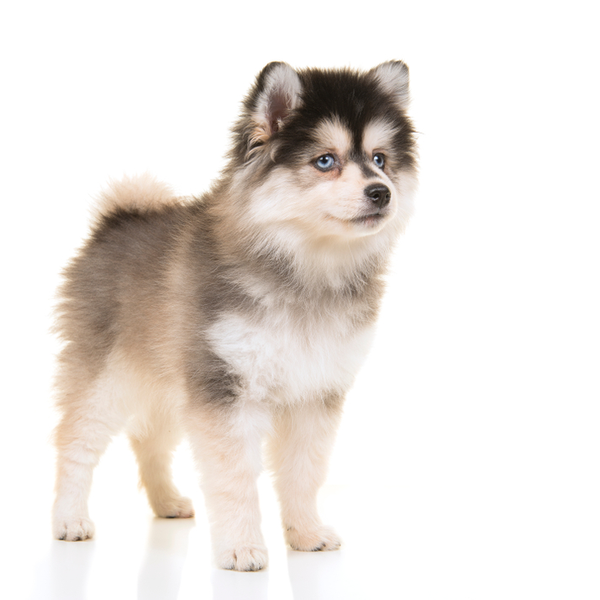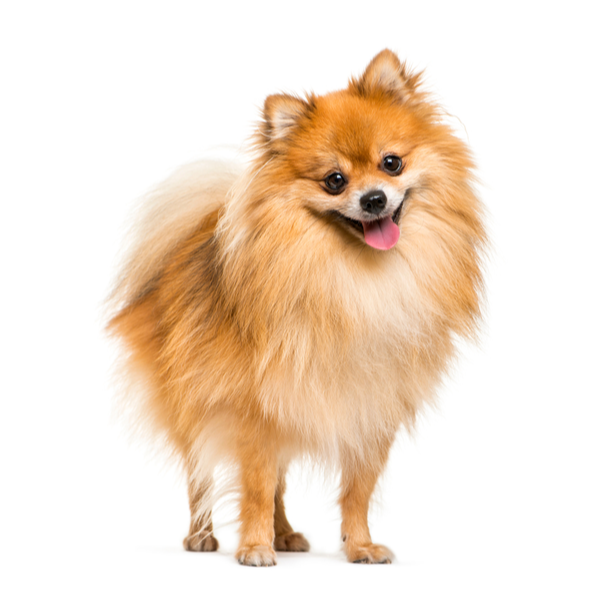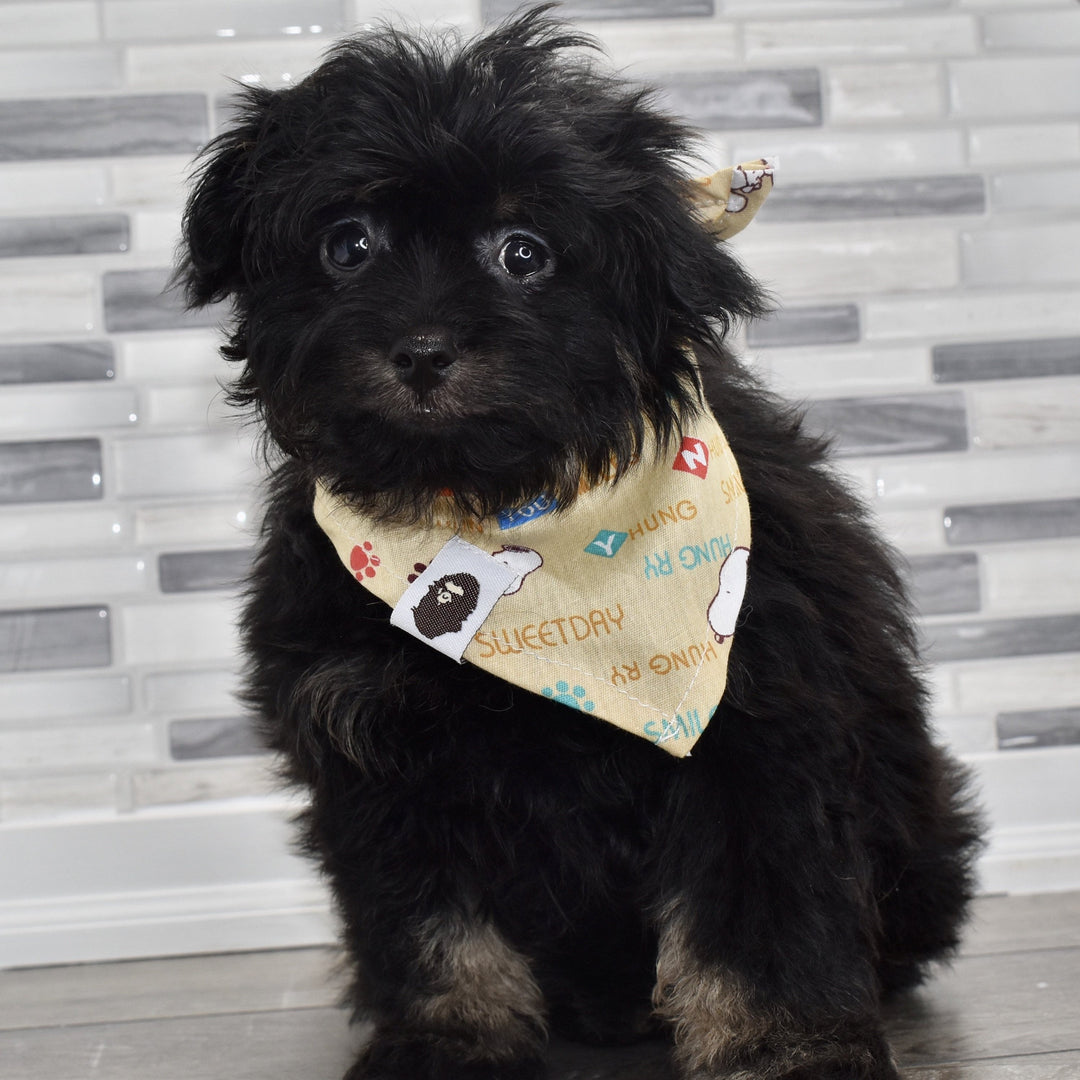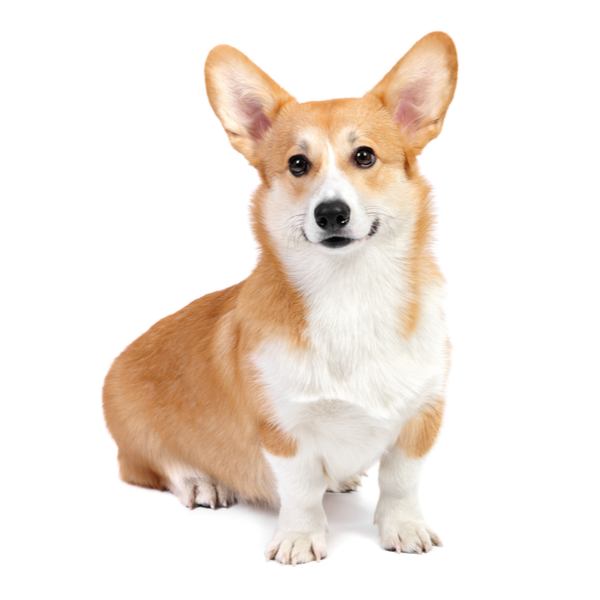
POMSKY
Stubborn. Smart.
Also known as Husky Pom or Pom Husky, the Pomsky is the result of crossing a Siberian Husky and a Pomeranian. The combination produces a very cute, silky-soft dog that is strong, smart, and playful. The breed has a notorious stubborn streak that can make training a challenge despite their intelligence. They are vocal enough that they don’t make great apartment or condo dogs. They need mental stimulation as well as physical exercise and will love outdoor activities. They will be loving toward the entire family, but be ready for them to form a deeper bond with one person.

Temperament
They generally don’t do well with children, but they can get along with kids and pets they meet in puppyhood. They will be affectionate with the whole family, but they tend to create a deeper bond with their favorite person.
This breed is vocal and may not be a good candidate for apartment or condo living.
The Pomsky can become nervous around strangers and aggressive around other animals, so it is very important to socialize them from an early age.
This breed is known to have a high prey drive, so keep an eye out when smaller animals are around.
Because of their stubborn streak, Pomskies can be tough to train. With patience, perseverance, praise, and treats, you’ll eventually see results.

Appearance
Their muzzle is tapered, and their body is well-proportioned and muscular. They have wide shoulders, strong legs, and a furry tail that curls over their back.
They have a beautiful, silky, medium-length coat that is usually a combination of two colors. Their eyes can be brown, hazel, blue, or green, and they can even have different colored eyes.
Their double-coats are dense and silky, and they can be:
- Black
- Gray
- Cream
- White
- Fawn
- Brown
- Combinations of these colors
They weigh between 20 and 30 pounds and are between 10 and 15 inches tall.

Exercise
They will enjoy a daily walk as well as time to play or run outdoors. They also tend to enjoy swimming.
Because Pomskies are so smart, they need mental stimulation as well as physical exercise. Interesting toys like puzzles or treat-dispensers will keep them busy and challenge their intellect.
This breed is well-suited to cold weather (but should be appropriately dressed for extreme elements).
This breed is well-suited to cold weather (but should be appropriately dressed for extreme elements).
Pomskies are believed to have originated in the United States in about 2009, and the first record of a Pomsky litter born there was in 2012. They are the result of a cross between a Siberian Husky and a Pomeranian. The breed became popular quickly in North America and Europe and was the most popular designer dog of 2017. Though it’s a young breed, its ancestors have long histories.
Siberian Huskies are believed to have originated with the Chukchi, a nomadic Siberian tribe. DNA tests revealed that the breed is ancient, though little is known about their early history. They were kept as family dogs by the Chukchi and are known to have slept in the children’s beds to keep them warm. They also helped with transportation. The breed was taken to Alaska in 1908 and was used as a sled dog during the gold rush. They took part in the 408-mile All-Alaska Sweepstakes race, which they continue to participate in today. The last Siberian Husky was exported from Siberia in 1930 when Siberian borders closed. The breed was also recognized by the American Kennel Club in 1930.
Pomeranians originated in the German province of Pomerania, which is where they got their name. They are descendents of Spitz breeds closely related to the German Spitz, the American Eskimo Dog, the Samoyed, and other Spitz dogs. Poms were originally larger, weighing up to 30 pounds. They were popular and known to be the companions of several distinguished and famous people including Michelangelo, Martin Luther, Mozart, and Isaac Newton. (Michelangelo’s Pom sat on a pillow to watch him paint the ceiling of the Sistine Chapel, while Mozart dedicated an aria to his beloved Pom.) The popularity of the breed increased in England when Sophie Charlotte arrived from a province near Pomerania, married future King George III, and brought two Poms with her. The breed was also a favorite of Queen Victoria, who especially liked the smaller ones. English fanciers began breeding smaller Pomeranians as a result. The breed was registered by the American Kennel Club in 1888. They were standardized from 1900 to the 1930s during which time the colors of their coats increased and they reached their current size.
Major health concerns to be aware of:
- Patellar Luxation
- Allergies
- Eye Problems
- Dental Problems
Minor health concerns to be aware of:
- Canine Hip Dysplasia
- Collapsed Trachea
- Skin Conditions
Pomskies have a high shed-rate, particularly when they favor their Pomeranian ancestors. As a result, they’ll need to be brushed daily with a wire pin brush to help with shedding and a slicker brush for mats and tangles. Be sure to always remove tangles before bathing. To avoid drying their skin, bathing should be only occasional or when they get into something messy or smelly. Your Pomsky will need to be trimmed every three months or so. While most dog parents take their Pomskies to professional groomers, it is possible to attend to their coats yourself if you have the right tools. Clean their ears weekly to keep them dry and prevent wax build-up and infection. This breed is prone to dental problems, so it’s very important to brush their teeth daily.




